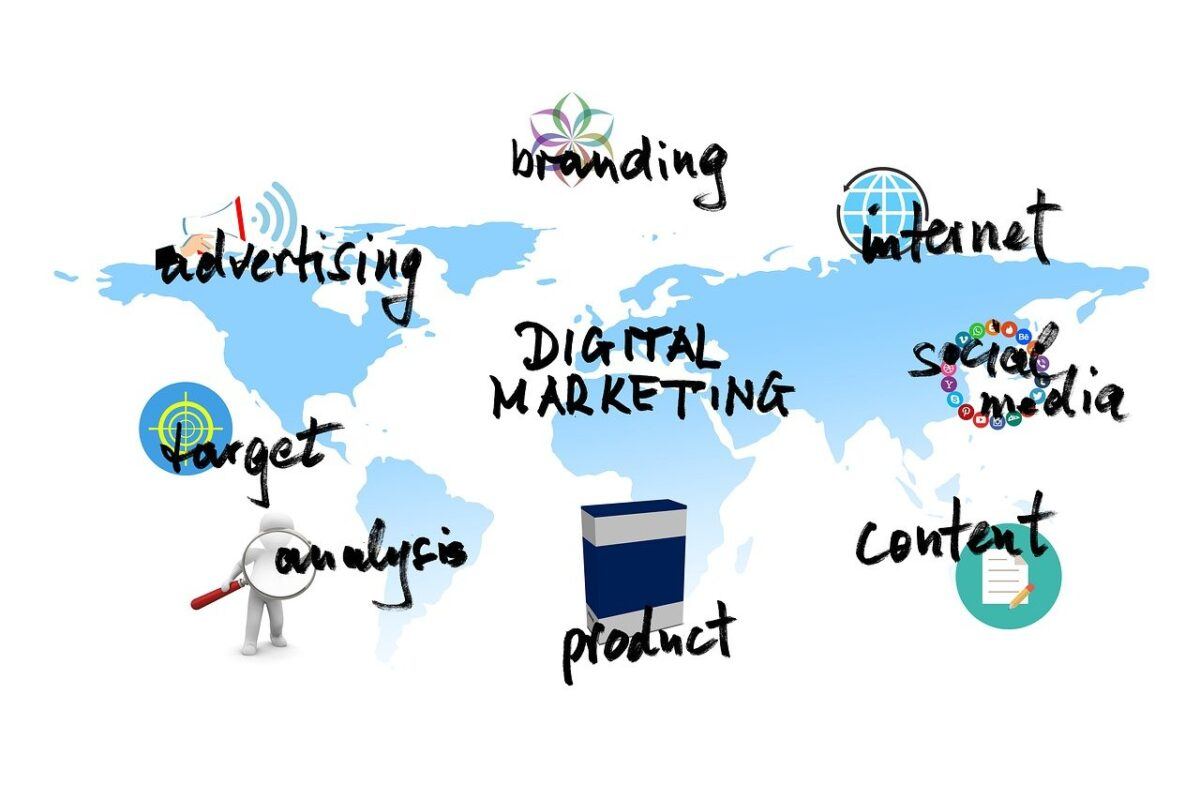Podcasting has exploded lately, and it’s easy to see why. Sharing your ideas, stories, or expertise by voice can be super rewarding. You don’t need fancy gear or broadcasting experience to get started. As a beginner, though, it’s normal to get stuck on what to talk about or how to actually get your podcast going.
I’ve helped a bunch of friends launch their first podcasts, and I can tell you: the trickiest part is often coming up with the right concept that keeps you excited (and your listeners coming back). This guide covers the basics—from generating ideas, tools you’ll want, to using podcasts for affiliate marketing, plus some common Q&As to smooth out your first steps. Along the way, I’ll share insider tips and practical steps to keep things stress-free, approachable, and even fun, so you can hit publish faster and find your groove.
How to Come Up with Podcast Ideas
It’s totally normal to feel like everything’s been done before, but you don’t need the most unique idea in the world. What matters is putting your own angle or voice to it. Here’s how I usually brainstorm topics:
1. Dig Into Your Own Interests
- What hobbies or topics do I get lost in for hours?
- What’s something friends always ask me for advice about?
- Which books, YouTube channels, or online communities am I obsessed with?
Those questions can spark some solid ideas. If you love cooking, maybe start with kitchen hacks for busy people or share reviews of your favorite recipes. If you’re passionate about gaming, you might break down new releases or go deep on top gaming strategies. The trick is to find topics where your excitement naturally shines.
2. Solve a Problem
- What’s a quick fix or solution I learned the hard way?
- Is there a conversation happening online that needs a fresh perspective?
Podcasts that help listeners save time, money, or hassle often do well. For example, if you figured out efficient budgeting tricks, a show focused on practical money advice can attract people looking to improve their finances without getting overwhelmed. Narrative-based problem-solving discussions also engage listeners because they can relate to your journey and learn from your experiences.
3. Blend Two Topics
- How about mixing your two favorite interests? For example, tech + art, fitness + mental health, or travel + saving money.
Combining topics can help your show stand out, even if both parts are pretty common on their own. Imagine a show where you discuss how mindfulness improves athletic performance, or explore unique travel destinations while focusing on frugal living. This mash-up approach can carve out a niche for curious and loyal listeners who share more than one interest.
4. Try Formats You Enjoy
- Solo storytelling (your own adventures and lessons learned)
- Interviews (spotlight interesting people)
- Roundtable chats (friends or online community members join in)
- Advice/call-in segments (listeners share stories or questions)
It can be fun to rotate formats or do the occasional special episode too. Mixing up your style prevents staleness and lets your audience see different sides of you. Consider polling your listeners for feedback as you go—it can direct your format and make them feel included in your show’s growth.
– Turn your own Hobby/Niche website into revenue.
– Monetize content based on your interests and goals.
– Also monetize Social Media and YouTube.
– Step by step training, tools and support. Everything you need for success.
– Your own AI powered website.
– Try it FREE to see if the program is right for you. No credit card needed.
Step-by-Step: How to Start Your First Podcast
Once you have a basic idea, here’s my simple checklist to get your show off the ground as smoothly as possible. These steps work whether you’re going solo or planning interviews right from the start.
1. Clarify Your Podcast Concept
- Pick a topic/theme that keeps you interested.
- Decide on your ideal listener (“busy parents,” “indie game fans,” etc.).
- Sketch out a rough list of episode topics—enough for the first 5-10 episodes.
Jot down the core goal of your podcast: is it to share knowledge, story-tell, or just have some fun? This focus will shape every episode and keep you motivated.
2. Name Your Show
- Choose something easy to say, spell, and remember.
- Check that the podcast name isn’t already taken (Apple Podcasts and a quick Google search are handy for this).
Your podcast name should hint at your topic or vibe and be simple enough that listeners won’t forget it after hearing it once. Run your top choices by a few friends for honest feedback before settling on one.
3. Get the Tools You’ll Need
- Microphone (you don’t need expensive gear. USB mics like the Audio Technica ATR2100x or Samson Q2U sound great for beginners).
- Headphones (helps you monitor audio and avoid echo).
- Recording software (Audacity and GarageBand are both free and really userfriendly).
- Podcast hosting platform (Buzzsprout, Podbean, and Anchor are all friendly for beginners and help your podcast show up on Spotify, Apple, and more).
- Basic editing tools (most audio recorders include this, so you’re covered with Audacity or GarageBand!).
If you’re interviewing guests remotely, check out sites like Riverside.fm or Zoom, as they make remote recording pretty simple. You don’t have to spend hours figuring out software, either, which keeps the process fun.
4. Record Your First Episodes
- Write a loose outline, but don’t script every word to keep it natural.
- Record in a quiet place (closets or rooms with lots of pillows work great to cut down on echo and outside noise).
- Keep your early episodes a bit shorter (20–30 minutes is perfect for beginners to get comfortable).
Recording a “pilot episode” to practice your delivery can help you shake off nerves. Play it back, notice where you can improve, and tweak your notes for next time.
5. Edit and Publish
- Edit out big gaps or mistakes but don’t stress about being perfect.
- Create a simple podcast cover image (Canva has some free templates).
- Upload to your podcast host and fill in the episode’s title and description with keywords (this helps people find you!).
Your editing doesn’t need to rival radio professionals. Good enough for clear listening is absolutely fine for your first few episodes. Celebrate each small win!

What Tools Do You Need to Start Podcasting?
I get asked about gear more than anything. My advice: don’t get stuck shopping for the “best mic” for weeks. Here’s all you really need to get rolling:
- Decent USB Microphone: The ATR2100x and Samson Q2U both plug straight into your laptop and sound way better than built-in headset mics.
- Headphones: Any closedback headphones work (even your phone’s if needed). These help you catch weird noises before you hit publish.
- Recording & Editing: Audacity and GarageBand are both free. You just hit “Record,” then trim and export the episodes.
- Podcast Host: Hosts like Buzzsprout or Anchor walk you through uploading your show so it’s on Spotify, Apple, and everywhere else with just a few clicks.
- Remote Interview Platform: Riverside.fm and Zoom make it easy to connect with guests, but you can even start with a regular phone call and record that.
If you get stuck on tech stuff, YouTube tutorials are seriously helpful and most podcast hosts have simple guides, too. Don’t let equipment worries hold you back from sharing your ideas. Plenty of successful shows have started with limited gear and improved bit by bit.
Podcast Ideas for Beginners Worth Trying
- Local Stories: Interview people in your town or city. Local history, business spotlights, or neighborhood updates can be a hit.
- Learning Something New: Share your progress picking up a new hobby, language, or fitness goal. Listeners love learning with you.
- Review Show: Movies, books, music, or even gadgets. Share honest takes and let listeners send in their suggestions.
- MiniSeries or True Stories: Make a short podcast focused on a single event, person, or theme.
- How To/Advice: Tips on budgeting, meal prep, or anything else you enjoy helping people with.
- Current Events (With a Twist): Give your personal spin on news or pop culture.
- Comedy and Stories: Lighthearted skits, improvisations, or sharing funny observations from real life. These formats are easy to produce and connect well with listeners looking for a quick laugh or daily boost.
Don’t stress about format or topic perfection. Starting is way more important. Many top podcasters refined their shows over time as they learned what works best for them and their listeners.
Using Podcasting for Affiliate Marketing
Podcasting can really help you with affiliate marketing, and here’s why: building trust with your listeners over time honestly makes them more open to your product suggestions. Here’s how it usually works:
- Share Useful Product Recommendations: Talk about products or services you actually use during your episodes. Mention them naturally, mixed into your advice rather than stopping for a formal ad break.
- Link in Your Show Notes: Most podcast platforms let you add a show notes section for each episode. Pop your affiliate links there so listeners can easily find and buy what you mention.
- Special Episode Giveaways: If you work with a company, try to offer listeners a discount code or a small giveaway. That gives people another reason to click.
- Honest Reviews: People tune out obvious ads, but they’ll pay attention if you’re sharing honest pros, cons, and tips from your experience.
A podcast with a loyal audience can turn into a steady affiliate income stream if you’re patient and authentic about what you share. Over time, as your trust grows with your listeners, brands will take notice too, increasing partnership opportunities and deepening your podcast’s value.
FAQ: Beginner Podcasting Questions
1. Can I start a podcast for free?
Yes, you can! Free tools like Audacity, GarageBand, and even Anchor as a host let you launch without spending money on software. You can start with a basic mic or even your phone to learn the ropes. A modest start is all you need, and you can upgrade as your confidence and show grow.
2. How long should a podcast episode be?
There’s no strict rule. For beginners, I think 20–40 minutes keeps things manageable and holds attention. Feel free to experiment. Some podcasts do well with 10minute quickies, others go deep for an hour. The key is to find a length that fits your style and maintains your listeners’ interest.
3. How do I get people to listen?
Share new episodes with friends, on your social media, and in groups where your topic is popular. Ask guests to share their episodes, and keep your show’s title and cover art simple and clear. Consistency and genuine engagement with any feedback also help your audience grow steadily over time.
4. Do I need fancy editing skills?
Nope! You just need to trim out awkward gaps or big mistakes. Good audio quality helps but doesn’t have to be studiolevel on day one. Most hosts have tutorials that make basic editing pretty easy. Practice editing on a sample file first to boost confidence.
5. Can I podcast alone, or do I need guests?
You can totally start solo, interview guests, or mix it up. If you’re nervous, start by recording a few solo episodes to find your voice, then branch out. Experiment with different formats to see what feels natural and engaging to you, as well as to get a feel for what your listeners enjoy.
Beginner Podcasting Questions
Can I start a podcast for free?
Yes, you can! Free tools like Audacity, GarageBand, and even Anchor as a host let you launch without spending money on software. You can start with a basic mic or even your phone to learn the ropes. A modest start is all you need, and you can upgrade as your confidence and show grow.
How long should a podcast episode be?
There’s no strict rule. For beginners, I think 20–40 minutes keeps things manageable and holds attention. Feel free to experiment. Some podcasts do well with 10-minute quickies, others go deep for an hour. The key is to find a length that fits your style and maintains your listeners’ interest.
How do I get people to listen?
Share new episodes with friends, on your social media, and in groups where your topic is popular. Ask guests to share their episodes, and keep your show’s title and cover art simple and clear. Consistency and genuine engagement with any feedback also help your audience grow steadily over time.
Do I need fancy editing skills?
Nope! You just need to trim out awkward gaps or big mistakes. Good audio quality helps but doesn’t have to be studio-level on day one. Most hosts have tutorials that make basic editing pretty easy. Practice editing on a sample file first to boost confidence.
Can I podcast alone, or do I need guests?
You can totally start solo, interview guests, or mix it up. If you’re nervous, start by recording a few solo episodes to find your voice, then branch out. Experiment with different formats to see what feels natural and engaging to you, as well as to get a feel for what your listeners enjoy.
Ready to Launch? My Action Plan for Podcast Beginners
- Pick a topic you’re honestly excited to talk about.
- Set aside one hour to record a quick trial episode—no pressure, just to see what it’s like!
- Upload your first episode using a free podcast host.
- Tell friends about your new show. Their feedback is super useful.
- Tweak your setup and show format as you go.
Your first episodes might feel awkward, but you’ll get better fast. Grab your mic, try out a few ideas, and just enjoy learning. There’s an audience out there waiting to hear what you have to say! The best way to grow is to keep going, stay open to feedback, and allow your podcast to change and improve with experience. So step up to the mic and let your voice cut through. You just might set off the next wave of must-hear podcasts.
Here’s a little transparency: Our website contains affiliate links. If you click and make a purchase, we may receive a small commission. Don’t worry, there’s no extra cost to you.




